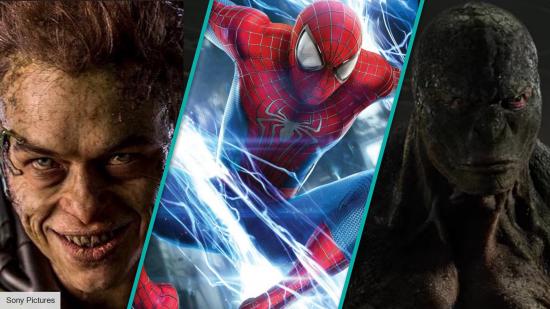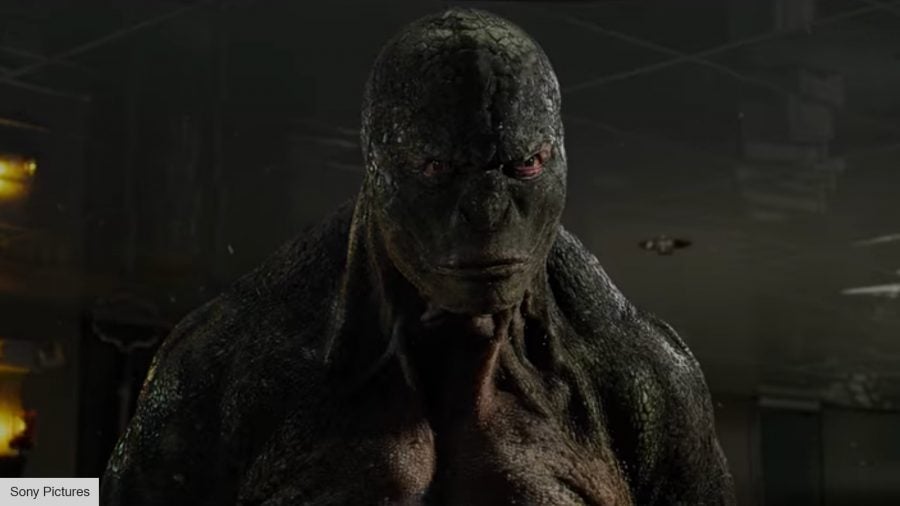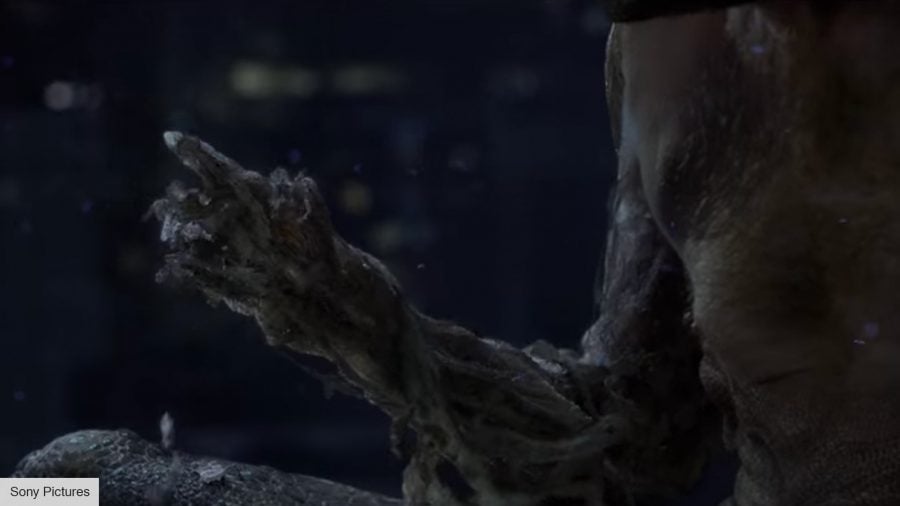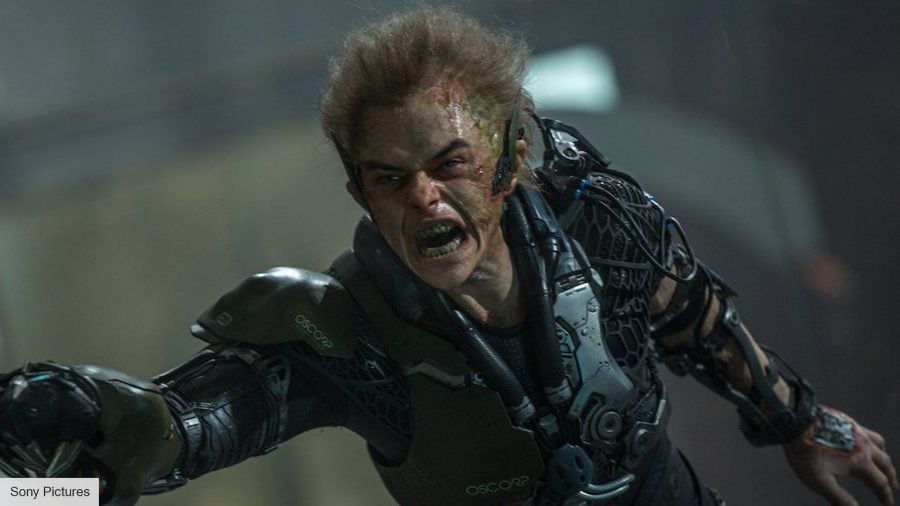In 2010, Sony made the surprising decision to reboot the Spider-Man franchise when Sam Raimi felt he couldn’t meet the planned 2011 release date for Spider-Man 4 (per Deadline). Raimi’s sequel would’ve supposedly seen Tobey Maguire’s Web-Slinger return to face John Malkovich’s Vulture as well as Anne Hathaway’s Felicia Hardy A.K.A Black Cat.
The studio tasked 500 Days of Summer director Marc Webb (insert your own web/webb joke here) with the reboot, and in 2012 the world was introduced to Andrew Garfield in The Amazing Spider-Man. There’s definitely a negative vibe surrounding The Amazing Spider-Man duology, mainly because Sony wanted the film to be a truly modern take on Peter Parker with an added focus on spinning it off into its own cinematic universe.
The result was poor reviews for the sequel, which also stars Jamie Foxx as Electro and Dane DeHaan as Green Goblin. But there’s a lot of love for Andrew Garfield’s take on the Wall-Crawler, and rightfully so. However, these films are a little better than they’re given credit for, and here’s why: they’re secretly body horror movies.
One of the most significant themes in most Spider-Man tales is the loss of self and how a transformative experience affects people differently depending on their morals and circumstances. When Peter is bitten by the radioactive spider, his upbringing with Uncle Ben and Aunt May makes him realise that his newfound abilities can be used to help society rather than benefit him. However, the Spider-Man villains are often out for personal gain in one way or another.
When Pete gets bitten at Oscorp, he later finds a bulbous spider-bite on his neck with the now dead-spider hanging out of it via a long web. It’s definitely a wince-worthy moment when he yanks it out of his neck.
Genetic abomination: Best monster movies
However, he has it easy compared to Dr Curt Connors (Rhys Ifans), who is determined to find a way of regenerating limbs so that he can give himself a new arm. And after a little help from the titular Web-Head, he manages to find a way using reptile DNA — even regrowing his missing arm.
But when he first wakes up to find his new limb, it’s encased in a scaly cocoon that he has to rip through to find his bizarre white, pale appendage. It’s covered in stringy bits of dead flesh that he peels off with ease as if he’s been reborn thanks to a green chrysalis. Obviously, this has the unfortunate delayed side-effect of transforming him into a gigantic lizard – which is genuinely a little disturbing if you think about it for too long. One moment, in particular, sees his claws ooze further out of his fingers to scratch Spidey mid-fight. Gross.
Connors’ whole arc is pretty psychologically disturbing because although the villain sees it as an evolution – he’s also devolving into an animalistic monster. Connors has to face what he’s become when his Lizard arm disintegrates before his eyes after Pete manages to find a cure.
His arm crumbles to pieces, with bits of skin, muscle and bone all flaking away from him in the wind atop Oscorp Tower. Now, I’m not saying this puts the series in the ranks of other famed body horror movies like Hellraiser, The Thing, Society, or The Fly – but Sony wasn’t afraid to get a little grotesque at times.
Just look at the horrific way Jamie Foxx’s Max Dillon is turned into Electro in the sequel: he falls into a vat of genetically modified electric eels who viciously attack him. Max goes through his own crusty chrysalis after the accident, and he wakes up in the morgue – peeling back the layer of burnt skin to reveal his new blue body. Sure, it’s a little cleaner than Curt Connors’ transformation, but Max Dillon still loses his humanity in the process. However, Marc Webb really pushes things further when Harry Osborn descends into villainy, becoming the Green Goblin.
Harry’s whole arc is about fighting his inheritance from his father, Norman Osborn (Chris Cooper). Whether it’s becoming Oscorp CEO and grappling with the board of directors, to the hereditary illness which is set to plague Harry like his father before him. We briefly see the long-term effects of Retroviral Hypodysplasia in Norman at the film’s start, where he’s bed-bound with mottled green skin and long claws.
Goblins galore: Best fantasy movies
He makes a last-ditch attempt to cure himself using the spider-venom developed by Pete’s father, Richard Parker. However, it only pushes his condition over the edge in a gross scene that sees his veins turn black while green lesions burst out across his skin as he convulses on the floor.
It’s arguably the grossest moment in the series because we literally see Harry’s muscles shift and change as his skin ripples across his body, thanks to his disease. But it doesn’t last long – since Harry jumps into an experimental suit that stabilises his condition before a dramatic final punch-up with the Spider himself.
Not only is this visually unnerving to watch, but Harry himself has succumbed to his illness and his father’s legacy, becoming a cruel individual who has no qualms in trying to kill Peter and Gwen Stacy (Emma Stone). But why do these grim moments work so well?
Body horror maestro David Cronenberg revealed his own thoughts on the sub-genre when speaking to The Independent, saying, “philosophically, the body is the fact of human existence; we are our bodies. And people do have a fascination with their own bodies: they are worried about disease and ageing, and they are right to, as there’s no fixing it later.” You could say it gets under your skin.
Action is their reward: Best action movies
Sony still uses plenty of body horror in its other Marvel movies like Tom Hardy’s Venom, where the symbiote literally takes over Eddie Brock. Meanwhile, 2022’s Morbius saw Jared Leto’s Michael Morbius transformed into a blood-sucking vampire. Clearly, comic book movies and body horror go hand-in-hand.



